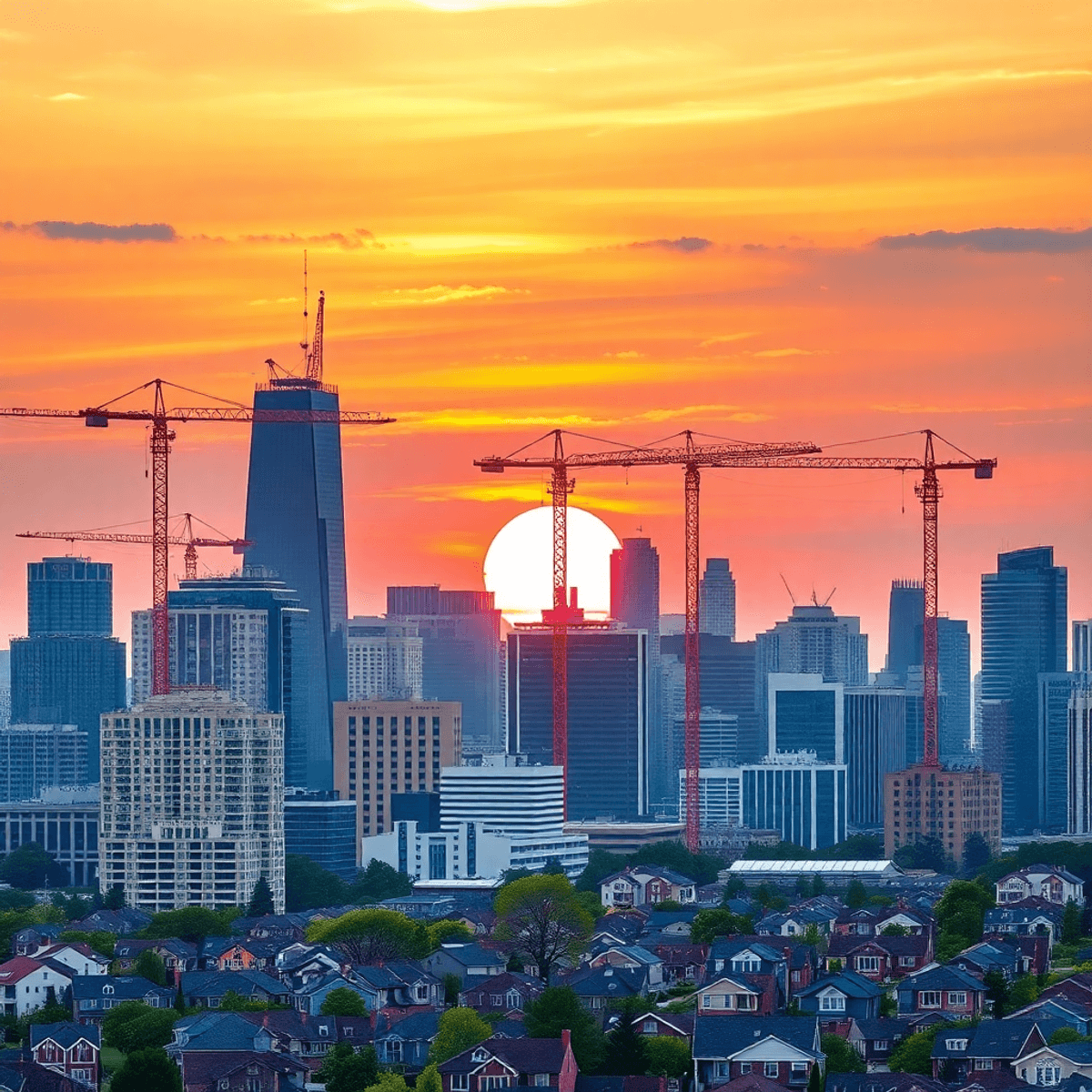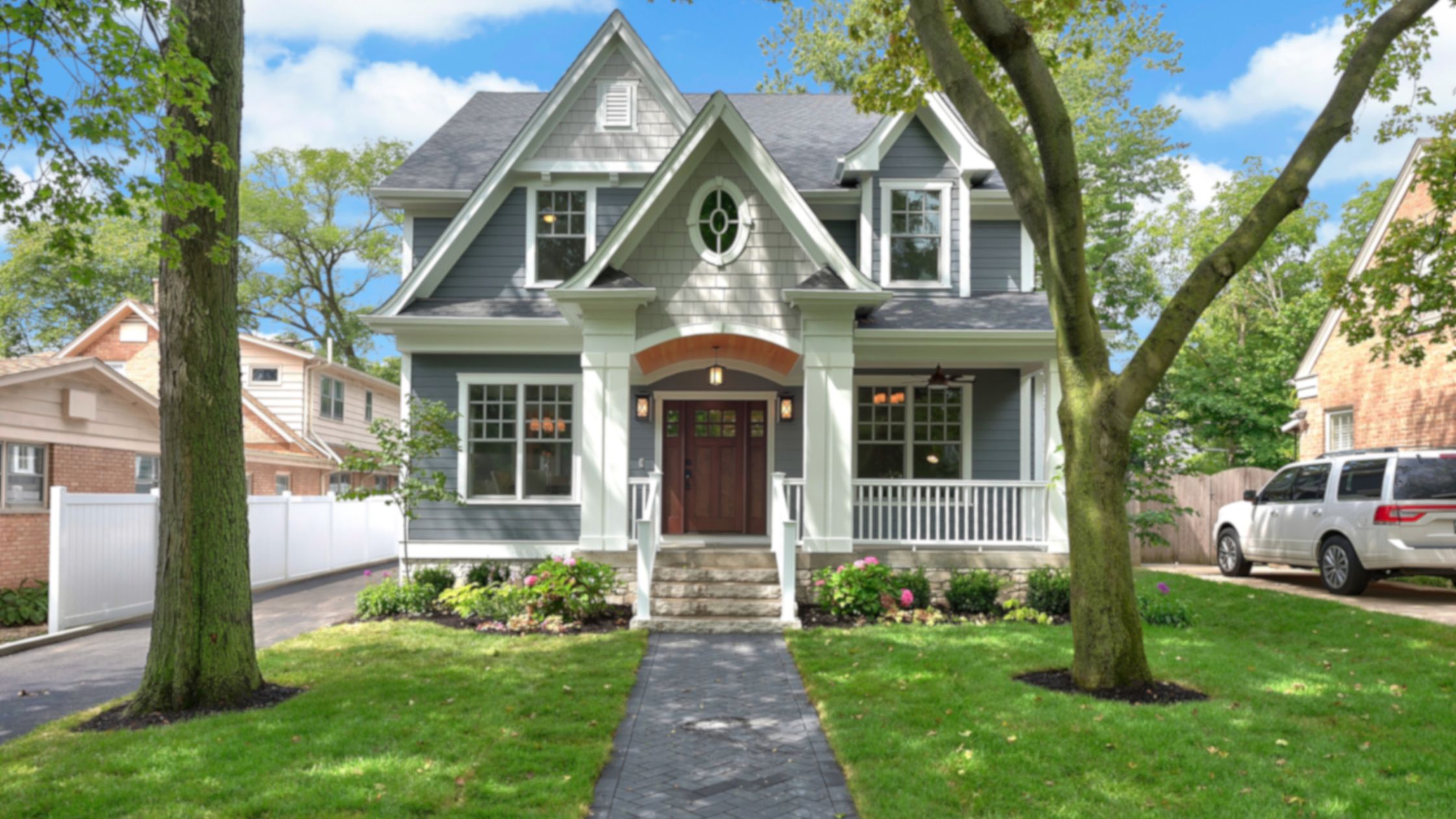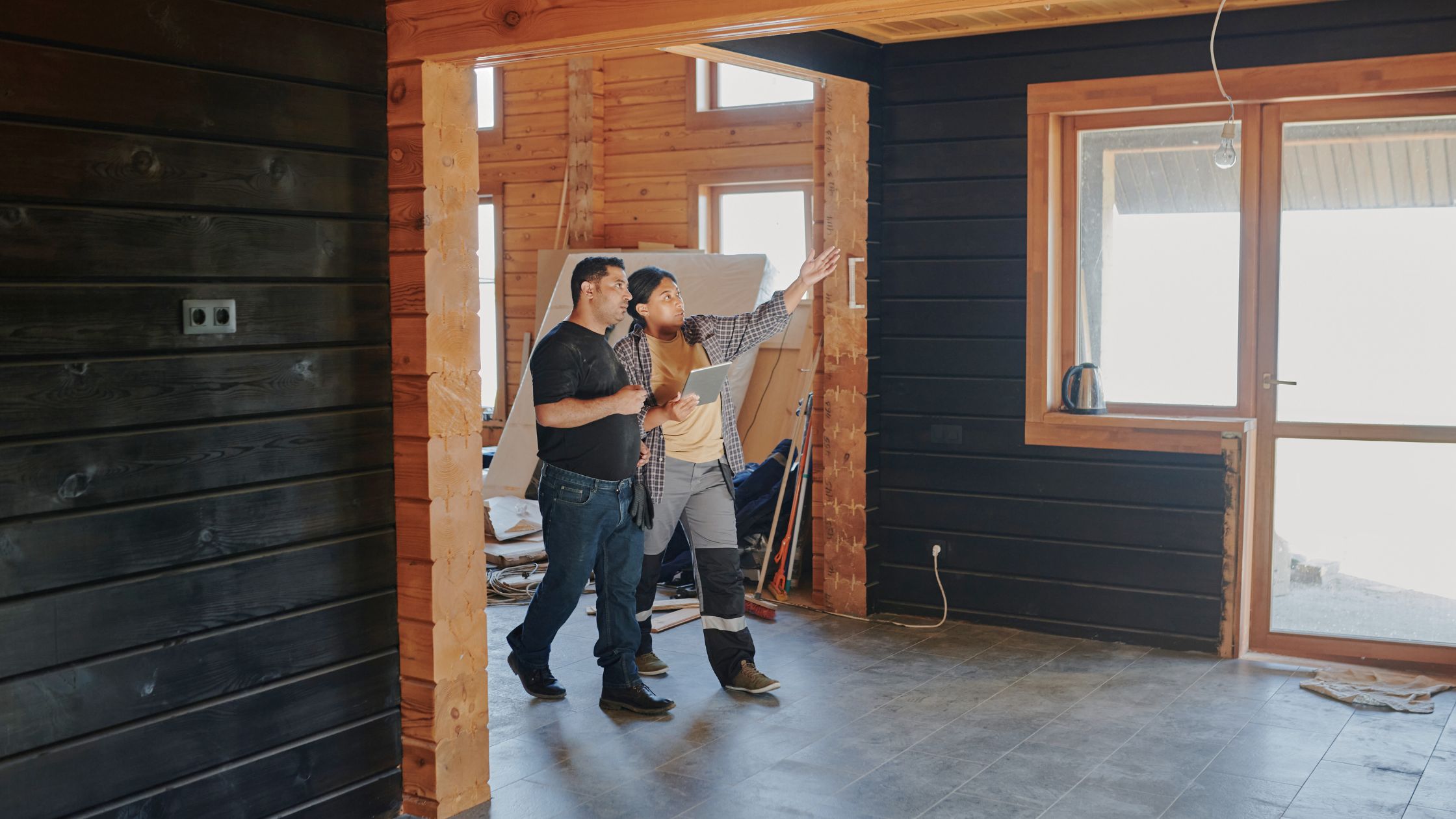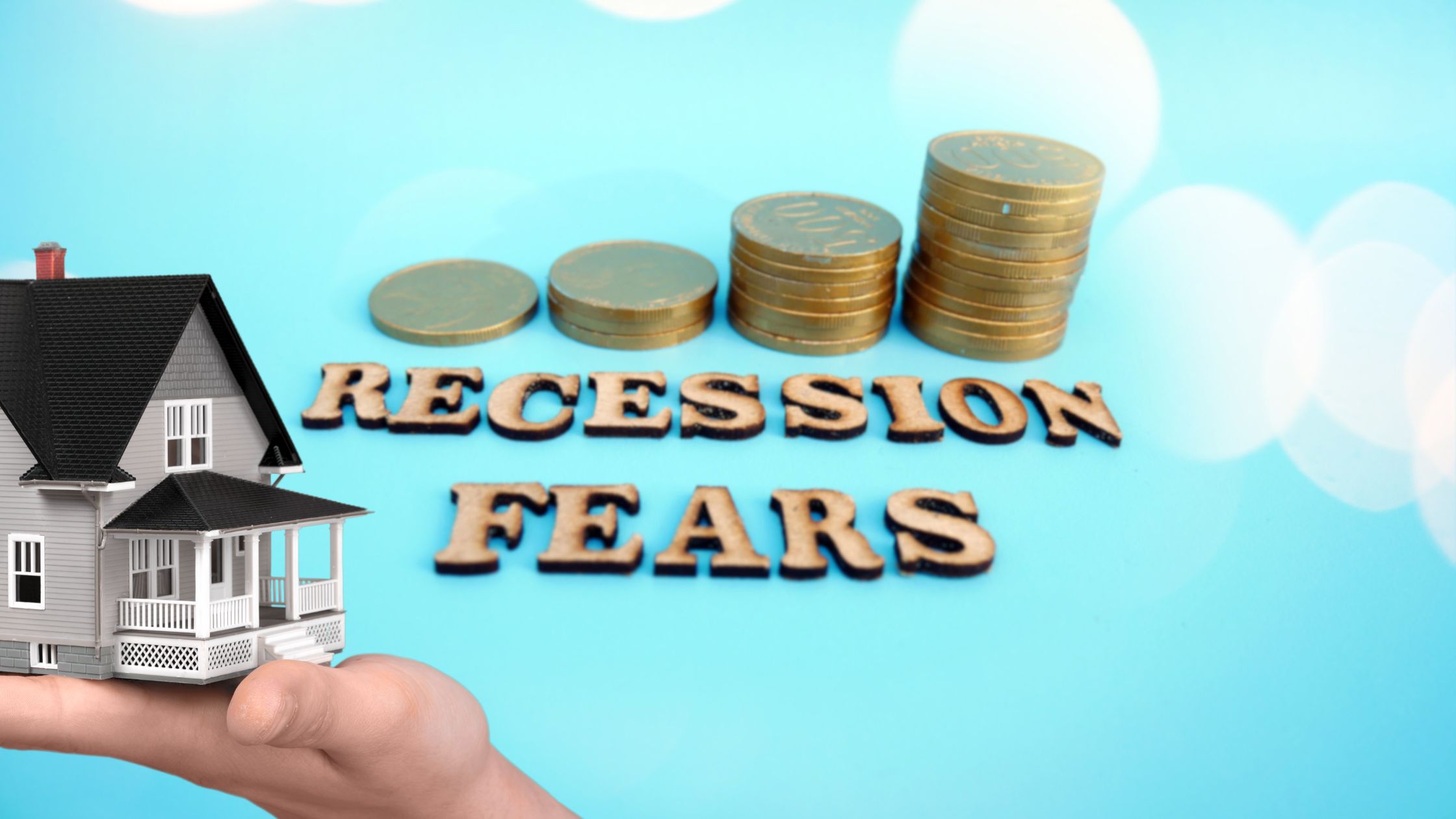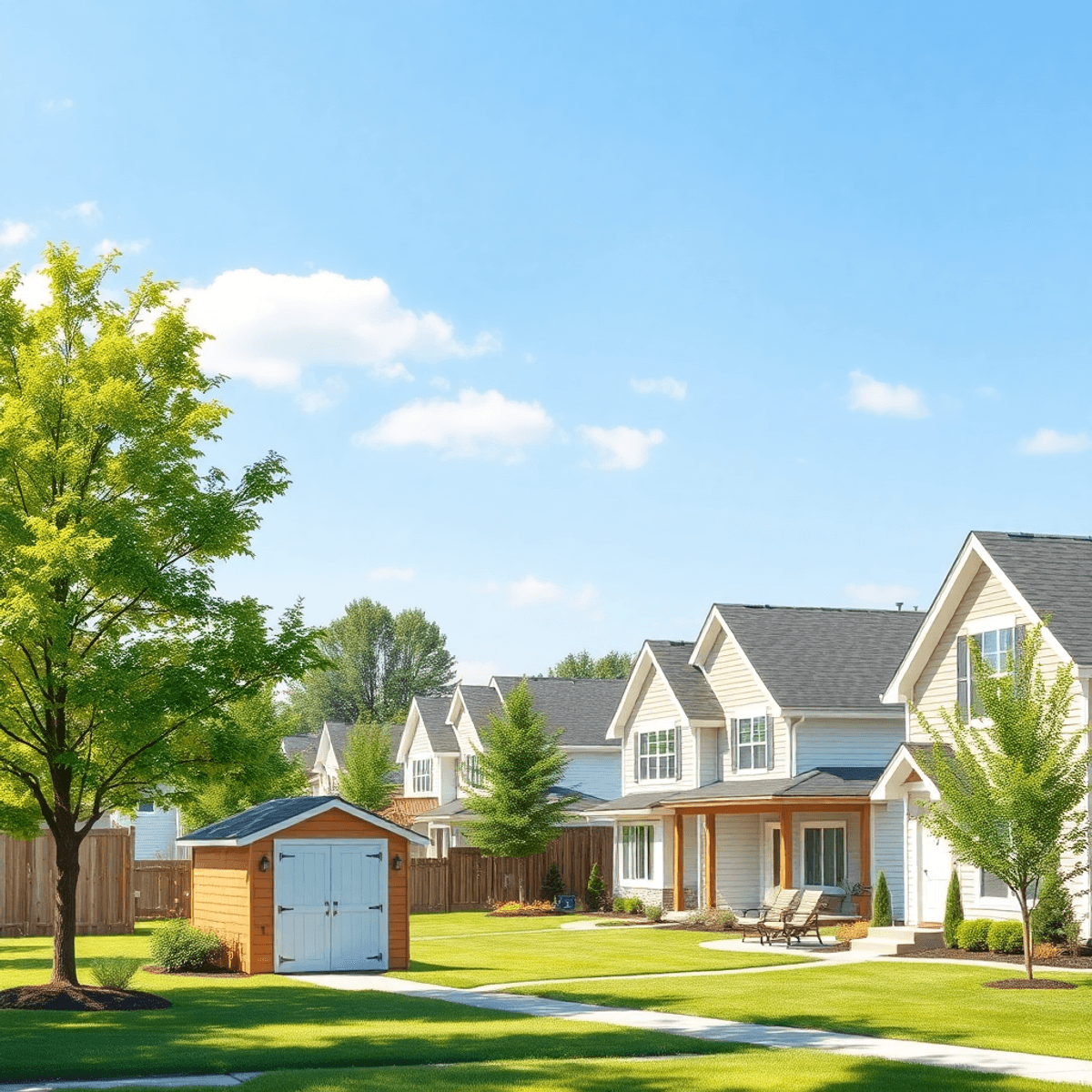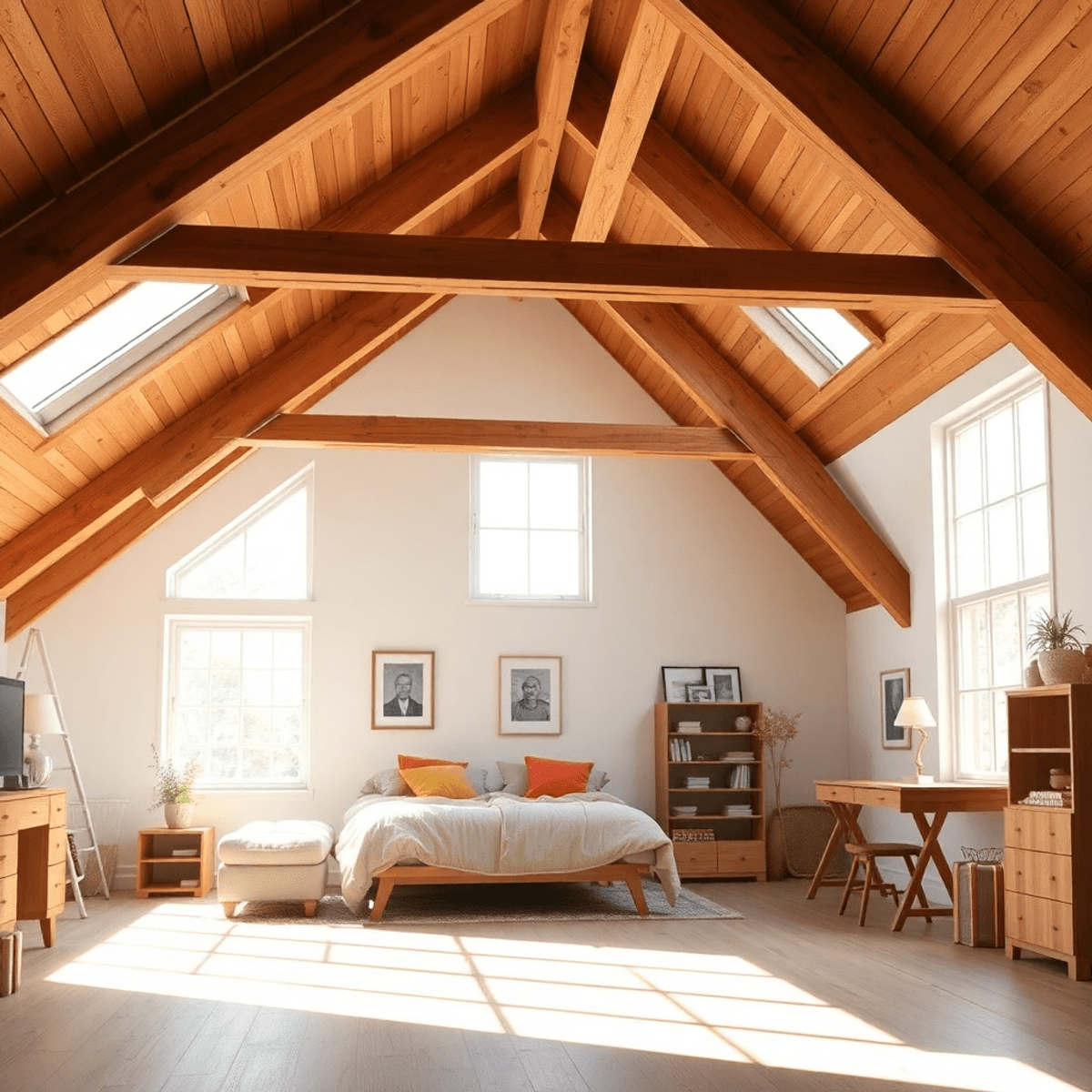Chicago’s 2025 Development Boom: New Projects Redefining the City’s Housing Landscape
Chicago’s 2025 Development Boom: New Projects Redefining the City’s Housing Landscape is reshaping how residents live, work, and connect across the region. The city stands at a pivotal moment, experiencing an unprecedented wave of construction activity. Cranes dot the skyline from the heart of downtown to expanding suburban communities.
- Large-scale mixed-use developments are transforming neighborhoods like the West Loop.
- Adaptive reuse strategies, such as converting vacant office buildings into residential spaces, offer creative solutions to urban challenges.
- Suburban expansion introduces thousands of new homes and diverse housing options, responding to shifting demographic needs.
Chicago ranks among the top U.S. markets for new construction activity, signaling resilience and adaptability in its housing market. This article explores the key trends powering Chicago’s urban housing transformation—examining their direct impacts on homeowners, communities, and the evolving character of Illinois’ most dynamic city.
As new projects roll out, homeowners are advised to stay informed about budgeting for remodeling costs which are expected to change with this development boom. Furthermore, those considering renovations should be mindful of choosing the best materials for their specific needs.
In this fast-paced environment, it’s also crucial for homeowners to maintain their properties effectively. For instance, keeping kitchen counters neat and clean can significantly enhance home aesthetics. Here are some tips to keep your kitchen counter neat and clean.
Additionally, as more people move towards suburban areas due to recent expansions, there will be an increased demand for outdoor living spaces. A well-designed cedar pergola in Libertyville could provide an ideal solution for homeowners looking to enhance their outdoor space.
Lastly, it’s important to note that not all renovations are straightforward; some may require specialized work that could involve insurance claims. In such cases, understanding how insurance work applies to home renovation can be beneficial.
The Scale and Scope of Chicago’s 2025 Development Boom
Chicago’s 2025 development surge ranks among the most ambitious in the nation. Large-scale developments are reshaping both familiar neighborhoods and outlying suburbs. From the iconic downtown skyline to transit-connected corridors, construction cranes signal a new era across the metro area.
1. Focus on the West Loop
West Loop stands out as a focal point, with thousands of residential units planned or already rising. This neighborhood’s transformation is mirrored along other key corridors where proximity to transit lines fuels demand for dense, walkable communities.
2. Variety in Building Types
New projects span a range of building types:
- High-rise residential towers now dominate sections of the city, adding hundreds of apartments per project.
- Mid-rise buildings and townhomes cluster along CTA and Metra lines, appealing to residents who prioritize easy commutes and urban amenities.
- These homes often feature modern designs and layouts that cater to contemporary lifestyles.
- Many homeowners are opting for a kitchen remodel to enhance their living spaces, making them more functional and aesthetically pleasing.
- Suburban sites like St. Charles and Plainfield are witnessing master-planned communities with hundreds of single-family homes, multifamily residences, and even senior living centers.
- In these sprawling developments, homeowners are increasingly interested in finished basement options, providing additional living space that can serve various purposes from entertainment to storage.
3. Rise of Mixed-Use Projects
Mixed-use projects in Illinois have become central to this wave. Developers are blending residential, retail, and office functions within single complexes. These hubs create vibrant neighborhoods where residents can live, work, and shop without ever leaving their block.
Additionally, with the rise in urban living comes an increased focus on security, leading to more advanced safety features being integrated into these new developments.
This multi-dimensional approach marks Chicago as a leader in modern urban planning—balancing density with livability and meeting the needs of a rapidly evolving population.
Spotlight on Major Projects Redefining Housing
West Loop’s Residential Transformation
Few neighborhoods illustrate Chicago’s 2025 development boom as vividly as the West Loop. Once a warehouse and industrial hub, this district is now at the epicenter of the city’s residential surge. Developers have committed to more than 6,500 new residences either planned or currently under construction—a scale that places the West Loop among the most active urban housing markets in the U.S.
The skyline here is rapidly evolving. Modern high-rises are emerging alongside classic low-rise brick structures, generating an eclectic urban fabric that fuses old Chicago character with contemporary design. This juxtaposition is central to the area’s appeal: instead of erasing history, builders are integrating it, maintaining a sense of place even as density increases.
Key characteristics shaping this transformation:
- Mixed-Material Towers: Glass and steel towers now stand shoulder-to-shoulder with historic facades. These new high-rises leverage modern amenities—rooftop decks, fitness centers, coworking lounges—while their ground floors activate the street with retail and cafes.
- Mid-Rise Developments: Not all new projects reach for the sky. Several developments opt for 6- to 12-story footprints, incorporating brick and stone elements to reflect the neighborhood’s industrial roots. This strategy supports a more gradual transition between older townhomes and larger towers.
- True Mixed-Use Spaces: Many new buildings don’t just house residents—they blend apartments with offices, restaurants, grocery stores, and boutique retailers. Projects like 900 Randolph and The Paragon exemplify this trend, turning single-use sites into vibrant hubs where people live, work, and socialize without leaving their block.
The Lincoln Yards development by Sterling Bay represents one of Chicago’s boldest mixed-use visions. Spanning 53 acres along the North Branch corridor, Lincoln Yards is designed to deliver about 6,000 residential units—including a targeted 20% affordable housing component—alongside parks and riverwalks. Its master plan weaves together high-rise towers with mid-rise buildings to create a varied skyline while maximizing public space. For residents seeking both luxury amenities and access to green spaces or transit lines, Lincoln Yards stands out as a model for future urban growth.
Changes within the West Loop illustrate how Chicago’s 2025 development boom is less about uniformity and more about diversity—in height, materials, uses, and resident experiences. Each project contributes a distinct piece to the puzzle of what modern city living can look like in Illinois’ most dynamic neighborhoods.
As part of this evolution, innovative strategies are also being employed in home design and planning. From smart storage ideas that reduce clutter to kitchen remodels that enhance functionality and style, these changes are reshaping how residents interact with their living spaces.
The next wave of housing innovation targets not just empty lots but also vacant office towers in downtown districts where adaptive reuse strategies are unlocking thousands of new homes for city dwellers.
Office-to-Residential Conversions Address Downtown Vacancies
Chicago’s 2025 development boom isn’t limited to new construction—adaptive reuse of vacant office buildings is creating a vital source of downtown housing. The LaSalle Street Corridor stands out as a flagship example, where city-backed redevelopment plans are converting underused commercial towers into more than 1,000 new residential units. This wave of office to residential conversions is directly addressing persistent vacancies while injecting fresh life into the urban core.
Key features shaping these transformations:
- LaSalle Street Redevelopment: Former corporate addresses now offer modern apartments, many with affordable housing components, aligning with citywide goals for housing equity.
- Urban Density and Walkability: Residents gain easy access to transit, shops, and employment centers—factors driving sustainable urban living.
- Integration of Amenities: Developers are enhancing converted properties with shared green spaces, fitness centers, and retail on the ground floor, echoing the mixed-use spirit seen in neighborhoods like the West Loop.
Projects like the Lincoln Yards development by Sterling Bay also reflect this trend on a larger scale. Spanning 53 acres, Lincoln Yards will deliver 6,000 residential units—20% designated as affordable housing—along with public parks and community amenities. These efforts transform not only skylines but also daily experiences for Chicagoans, reshaping real estate dynamics and increasing livability in once-overlooked corners of downtown.
Suburban Expansion and Diverse Housing Options
Suburban housing developments in Illinois are accelerating, with large-scale communities shaping the landscape in key areas like St. Charles and Plainfield. These suburbs are experiencing a wave of new construction, targeting families, young professionals, and retirees alike.
1. St. Charles: A Hub for Senior Living Communities
St. Charles stands out for its senior living communities, blending independent and assisted living options with amenities designed for comfort and convenience. The demand for senior living communities St. Charles continues to grow as more residents seek age-friendly housing alternatives within reach of healthcare and recreation.
2. Plainfield: A Diverse Market for New Homes
Plainfield’s new homes market features master-planned developments offering everything from traditional single-family homes to modern townhouses. Many projects incorporate walkable layouts, green spaces, and access to top-rated schools, reflecting changing priorities among suburban buyers.
Homeowners share stories of trading city condos for larger lots, home offices, or multi-generational setups in these emerging neighborhoods. Young families cite school quality and community parks as decisive factors. Retirees value the sense of security and proximity to healthcare providers found in these planned developments.
Suburban expansion is no longer limited to uniform subdivisions; instead, builders are responding with flexible designs and diverse housing types that address the full spectrum of demographic needs. This approach broadens appeal while accommodating evolving lifestyle preferences outside Chicago’s urban core.
In these suburban areas, homeowners are also embracing outdoor living trends, creating backyard oases that enhance their living spaces. For those considering renovations or expansions, options such as a second-story addition vs main-floor expansion are worth exploring. Additionally, as families grow or change, the need for efficient use of space becomes crucial. Implementing smart bathroom storage ideas can significantly maximize available bath space.
Market Dynamics Influencing Development Trends
1. Impact of Building Costs Inflation
Building costs inflation in Chicago has shifted the landscape for developers and buyers alike. Rising material prices, labor shortages, and supply chain disruptions have pushed construction budgets upward. Projects that once seemed feasible now require recalibration—developers are re-evaluating timelines, prioritizing phases, or scaling back amenities to keep projects moving forward.
2. Effect of Recent Interest Rate Changes
Recent shifts in interest rates are having a tangible effect on the housing market. After a period of rate hikes that slowed buyer enthusiasm, interest rate decreases are fueling new optimism among both homebuyers and developers across Illinois. Lower borrowing costs have made mortgages more attainable for many, enabling developers to move forward with sales-driven projects and buyers to revisit new-construction opportunities.
3. Condo Market Rebound Post-COVID-19
The condo market rebound post-COVID-19 is another trend shaping Chicago’s 2025 Development Boom: New Projects Redefining the City’s Housing Landscape. According to Illinois Realtors Association reports, demand for condos and new-construction homes has surged as remote work trends stabilize and urban amenities regain their appeal. The renewed appetite for city living is visible in pre-sale activity and swift absorption rates in both core neighborhoods and expanding transit corridors.
4. Importance of Innovative Solutions
As we navigate these market realities, innovative solutions in next-generation development strategy are essential. This includes embracing universal design principles to make homes more accessible, considering sustainable building materials to mitigate rising costs, and exploring options like screened porches versus sunrooms for enhancing property value while adapting to new lifestyle needs. Additionally, the growing interest in home renovations such as a bathroom remodel further underscores the shift towards personalized living spaces in response to evolving market dynamics.
Innovative Housing Solutions Supporting Supply Needs
Chicago’s housing developers are leaning into creative strategies that go beyond new high-rise construction. Rehabbing existing properties in Chicago has become a key tactic, breathing new life into older buildings and increasing the city’s quality housing stock without the footprint or environmental impact of expansive new builds. These renovations often preserve historic architectural character while updating interiors to modern standards, making neighborhoods more attractive for both longtime residents and newcomers.
Transit-oriented development is also gaining traction, especially through the rise of transit-oriented townhomes along Metra lines in Illinois. These projects cluster residential units within easy walking distance of commuter rail stations, enhancing connectivity for those who live outside dense urban centers but still desire quick access to downtown amenities. Townhome developments in suburbs like Elmhurst, Arlington Heights, and La Grange illustrate this approach, offering residents an appealing blend of suburban space and urban convenience.
Both rehabbing and transit-oriented designs support sustainable growth goals by maximizing the use of existing infrastructure and reducing reliance on cars. Residents benefit from improved walkability, reduced commute times, and a lifestyle that aligns with greener living priorities. The integration of these solutions demonstrates a flexible response to Chicago’s evolving housing needs—one that balances tradition with innovation.
The Broader Impact on Homeowners and Communities in Illinois
Homeowner experiences in Illinois reflect a mix of optimism and apprehension as new developments reshape neighborhoods. Many residents appreciate the infusion of modern amenities, improved infrastructure, and increased walkability. Rising property values often follow these projects, which can benefit longtime homeowners but also spark concerns about affordability and displacement.
As a result of these rising property values, homeowners might consider investing in [kitchen remodeling](https://rohrerforconstruction.com/your-local-expert-kitchen-remodeling-contractor-in-wauconda) or other home improvements to increase their property’s value further.
Community impact development Chicago extends beyond property values. Large-scale projects like Lincoln Yards and LaSalle Street Corridor conversions are required to include affordable housing components, broadening access for diverse income groups. This integration helps maintain social balance and prevents the creation of exclusively high-end enclaves.
“There’s excitement about new restaurants and green spaces, but some worry about losing the character that made our neighborhood special,” shared one West Loop resident.
Affordable units within luxury developments offer more housing choices, supporting a wider range of residents. These shifts prompt ongoing conversations about identity, inclusivity, and how best to serve both newcomers and established communities. Additionally, the rise in population density might lead to an increased demand for services such as screen houses, which provide a functional yet stylish solution for homeowners looking to maximize their outdoor living space while maintaining privacy.
Conclusion
Balancing growth with affordability and community needs remains at the heart of Chicago’s 2025 Development Boom. New projects are not just reshaping skylines—they’re introducing opportunities for mixed-income living, greater walkability, and revitalized neighborhoods.
Market forces such as fluctuating interest rates and construction costs will continue to influence the future of Chicago housing.
With sustained policy support and innovative urban redevelopment across Illinois, Chicago’s housing landscape is set for ongoing transformation—one that aims to meet resident needs while preserving the city’s unique character.
Chicago’s 2025 Development Boom: New Projects Redefining the City’s Housing Landscape promises a dynamic future for both homeowners and communities.
FAQs (Frequently Asked Questions)
What is driving Chicago’s significant development boom in 2025?
Chicago’s 2025 development boom is driven by large-scale projects, adaptive reuse strategies such as office-to-residential conversions, and suburban expansion. These initiatives are reshaping the city’s housing landscape with mixed-use developments, new residential towers, and expanded housing options beyond the urban core.
Which neighborhoods in Chicago are experiencing the most intense residential development in 2025?
The West Loop stands out as a hotspot for residential transformation with over 6,500 new residences planned or under construction. Additionally, transit corridors and areas like LaSalle Street are seeing adaptive reuse projects converting office spaces into residential units, contributing to downtown’s revitalization.
How are office-to-residential conversions impacting Chicago’s downtown housing market?
Office-to-residential conversions, especially along the LaSalle Street Corridor, are creating over 1,000 new residences by repurposing vacant office buildings. This adaptive reuse strategy enhances urban density, walkability, and addresses downtown housing vacancies while supporting sustainable growth goals.
What role do suburban developments play in Chicago’s 2025 housing landscape?
Suburban expansion includes large residential communities emerging in suburbs like St. Charles and Plainfield. These developments offer diverse housing options ranging from family homes to senior living communities, addressing demographic needs and reflecting changing homeowner preferences outside the urban core.
How are market dynamics such as inflation and interest rates influencing Chicago’s housing development trends?
Rising construction costs due to inflation pose challenges for project timelines and budgets. However, recent decreases in interest rates have fostered optimism among homebuyers and developers. Additionally, there has been a rebound in demand for condos and new-construction homes following COVID-19 disruptions, shaping current development activity.
What innovative housing solutions are being implemented to meet Chicago’s growing housing supply needs?
Innovative approaches include rehabilitating existing properties to enhance quality housing stock without extensive new builds and developing transit-oriented townhomes along Metra commuter lines. These strategies promote sustainable growth, improve connectivity, and align with residents’ lifestyles while supporting supply demands.
news via inbox
Nulla turp dis cursus. Integer liberos euismod pretium faucibua
